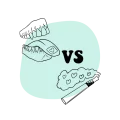Exploring the Visuals of DMT: What Do the Hallucinations Mean?
DMT (N,N-Dimethyltryptamine) is a powerful and potent psychedelic compound known for inducing intense, vivid hallucinations. It is often referred to as the “spirit molecule” due to its profound effects on the mind, which can include entering alternate dimensions, encountering otherworldly beings, and experiencing altered states of consciousness. Despite being a naturally occurring compound in the human body and certain plants, DMT’s effects, especially the visual hallucinations, remain a topic of fascination and intense study. In this article, we will explore the nature of DMT hallucinations, what they might mean, and the theories that attempt to explain these profound visual experiences. Exploring the Visuals of DMT

1. The Nature of DMT Hallucinations.
Intensity and Rapid Onset
DMT is often noted for the speed with which its effects take hold. Unlike other psychedelics like LSD or psilocybin, which typically take 30 to 60 minutes to reach full effect, DMT induces its effects almost immediately upon ingestion. The visual experiences are often described as overwhelmingly intense and colorful, with vibrant patterns and fractals that emerge rapidly. These visions occur within seconds and can last anywhere from 15 minutes to an hour, depending on the method of administration and the individual’s tolerance. Exploring the Visuals of DMT
Visual Hallucinations
One of the defining characteristics of a DMT trip is the visual hallucinations. Users often report seeing geometric shapes, intricate patterns, kaleidoscopic visuals, and vibrant, pulsating lights. These visuals often carry a sense of depth, making them feel as if they exist in a 3D space. Unlike the visuals experienced during other psychedelics, DMT’s visuals are often described as more “real” or “solid,” appearing with intense clarity and immersion. Exploring the Visuals of DMT
The “Machine Elves” Phenomenon
A common theme in DMT hallucinations is the appearance of beings or entities, often referred to as “machine elves” or “self-transforming machine entities.” These beings are usually described as friendly, wise, or playful and interact with the user in a variety of ways. Some individuals report these entities trying to communicate or impart knowledge, while others may experience them as overwhelming or even unsettling. The consistent appearance of these entities across a broad range of users suggests a shared aspect of the DMT experience, although their nature and significance are still open to interpretation. Exploring the Visuals of DMT
2. Possible Explanations for DMT’s Visual Hallucinations; Exploring the Visuals of DMT.
While the visuals of a DMT trip are widely described, their meaning and origin are still debated. Various theories attempt to explain these powerful visual experiences. Exploring the Visuals of DMT
2.1. Neurological and Chemical Explanations
DMT is a tryptamine, structurally similar to serotonin, a neurotransmitter that regulates mood, perception, and cognition. When DMT enters the brain, it binds to serotonin receptors, particularly the 5-HT2A receptors, which are involved in mood regulation and psychedelic effects. The hallucinations that DMT induces might be explained by the alteration of normal sensory processing in the brain. This interference with sensory information could lead to the vivid visual distortions and fantastical imagery that users experience. Exploring the Visuals of DMT
Visual Cortex Overload
Some neuroscientists suggest that DMT-induced hallucinations may be a result of the visual cortex being overwhelmed by sensory input. The brain attempts to make sense of the overwhelming flood of information by producing these vivid, often symbolic, visuals. The fractal and geometric patterns often observed during DMT trips could be an expression of the brain’s attempt to process the sensory overload in a way that is more coherent to the mind. Exploring the Visuals of DMT
2.2. The Role of the Pineal Gland
The pineal gland is linked to mystical experiences, partly due to its role in melatonin production. Some believe the pineal gland produces DMT during altered states of consciousness. This theory suggests the pineal acts as a “third eye,” granting access to higher realms. The visual hallucinations users experience may reflect these deeper, spiritual realms. Exploring the Visuals of DMT
2.3. The Influence of Set and Setting
In addition to the biochemical explanations, the concepts of “set” (mindset) and “setting” (environment) play an essential role in shaping the visual experiences during a DMT trip. The mental state of the individual prior to taking DMT can influence the nature of the hallucinations. A person who is in a calm, open-minded state may encounter beautiful, spiritual visions, while someone who is anxious or fearful might experience more unsettling or challenging visuals. Similarly, the environment in which the DMT is consumed can affect the type of hallucinations experienced. For example, being in a dark, quiet room versus an open, chaotic space could influence the nature of the visuals. Exploring the Visuals of DMT
3. Interpreting the Visuals: Are They Meaningful?
3.1. Spiritual and Mystical Interpretations
One of the most compelling aspects of DMT’s visuals is the sense of spiritual or transcendental significance that users often attribute to them. Many users report profound, life-changing experiences, including encounters with divine beings or entry into alternate dimensions. Some describe these visuals as gateways to a deeper understanding of the universe or self, while others interpret them as messages from otherworldly entities. These experiences have led to speculation that DMT’s visuals may offer access to higher planes of existence or that they might represent encounters with the subconscious or collective unconscious. Exploring the Visuals of DMT
Carl Jung and the Collective Unconscious
Carl Jung’s theory of the collective unconscious could offer an interesting framework for understanding DMT visuals. According to Jung, all humans share a collective unconscious that houses universal symbols and archetypes. DMT hallucinations may tap into this shared unconscious, manifesting as familiar archetypal images, symbols, and patterns that hold universal meaning across cultures. The intricate geometric shapes or encounters with otherworldly beings may symbolize the archetypal motifs Jung proposed, such as the self, the shadow, or the anima/animus. Exploring the Visuals of DMT
3.2. Psychological Interpretations
Psychologically, DMT’s visuals may reflect an individual’s innermost thoughts, fears, and desires. In some cases, users report confronting their deepest anxieties or experiencing a psychological breakthrough during their trip. The intense, often overwhelming nature of these visions can lead to cathartic experiences, where users work through unresolved trauma or personal issues. For some, the “machine elves” or other beings encountered during the trip may act as guides or manifestations of their subconscious, helping them navigate psychological challenges.
3.3. Cultural and Archetypal Significance
The types of visuals encountered during a DMT trip may also be influenced by cultural conditioning. Many users report seeing symbols, patterns, or beings that seem to fit into a broader cultural or religious context. For example, users with a background in Eastern spirituality may see Buddhist or Hindu motifs, while those influenced by Western esotericism might encounter angels or other figures from Christian mysticism. These culturally shaped images may represent the individual’s existing belief system and how it interacts with the DMT experience.
4. The Role of DMT in Creative Expression
4.1. The Intersection of Art and DMT
The vivid, intricate visuals experienced during DMT trips have inspired countless artists, musicians, and writers. Many creative individuals report that their experiences with DMT have shaped their work, leading to unique and innovative expressions. Artists such as Alex Grey, who is known for his intricate, otherworldly depictions of human consciousness and the cosmos, have openly discussed how their DMT experiences influence their art. The intricate patterns and kaleidoscopic imagery common to DMT hallucinations often find their way into artistic and creative expressions, making DMT an intriguing muse for those in the creative fields.
4.2. DMT and Enhanced Perception
Some individuals report that after using DMT, they experience enhanced perception in their everyday lives. Colors may seem more vivid, patterns more intricate, and reality itself more profound. This shift in perception has contributed to the idea that DMT may reveal a deeper layer of reality that is ordinarily hidden from view. This altered perception has inspired many creative individuals to explore new ways of seeing and understanding the world around them.
Conclusion
DMT hallucinations are one of the most intense and captivating aspects of the psychedelic experience. From vibrant geometric patterns to encounters with otherworldly entities, these visual experiences challenge our conventional understanding of reality and offer deep psychological and spiritual insights. Whether viewed through the lens of neuroscience, spirituality, or psychology, DMT’s visuals remain an important area of study and exploration. Understanding what these hallucinations mean—whether they are products of our brain’s neurochemistry, expressions of the subconscious mind, or glimpses into alternate dimensions—remains a question that continues to fascinate researchers and users alike.
